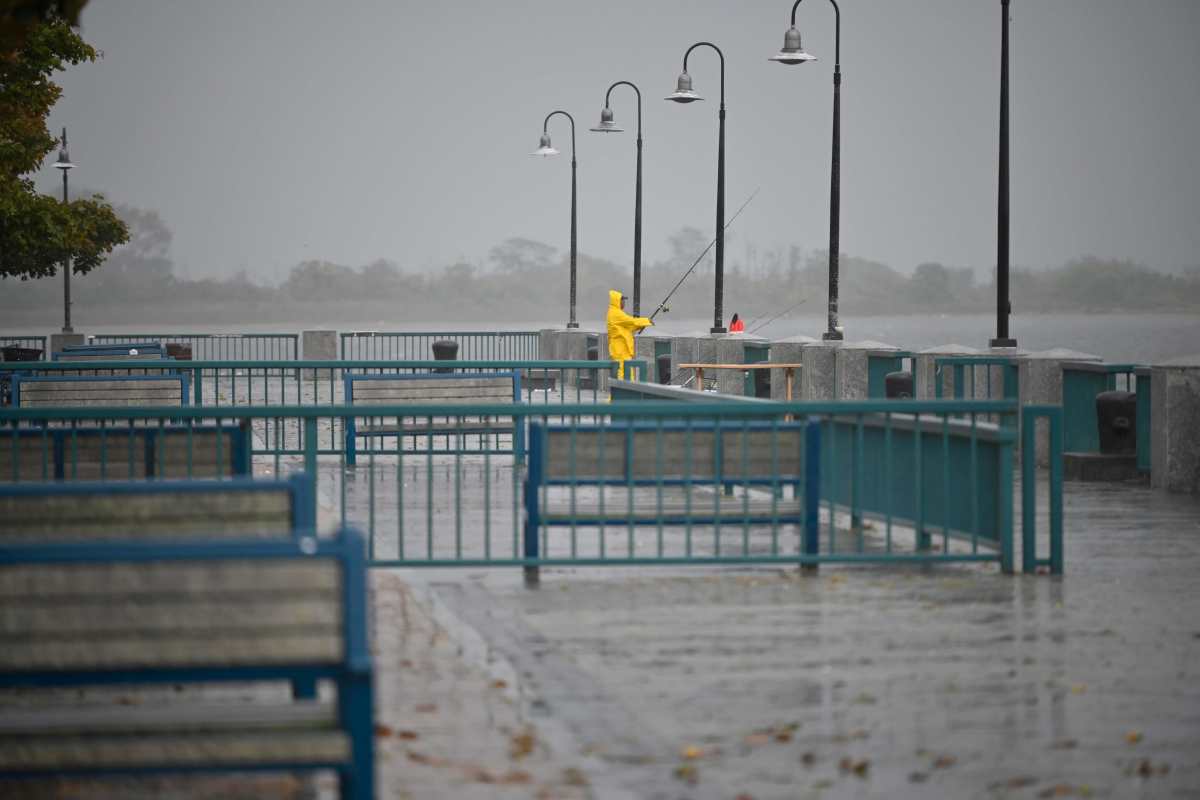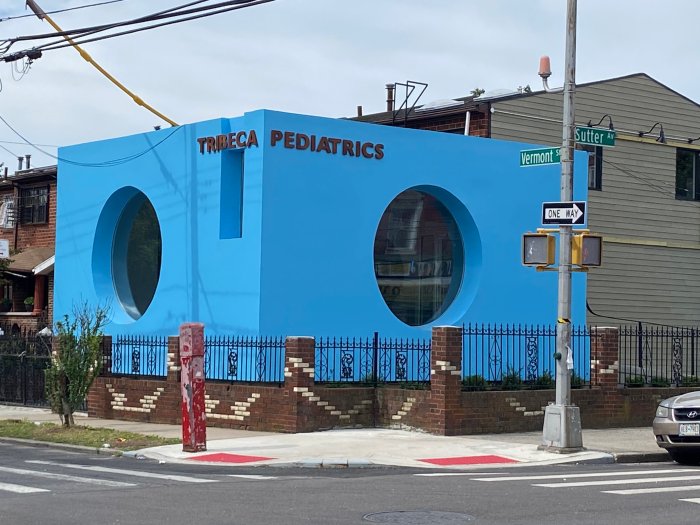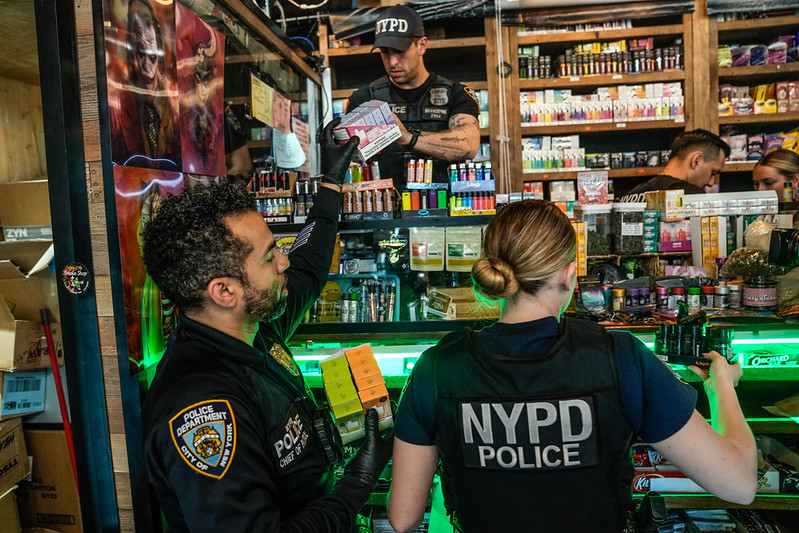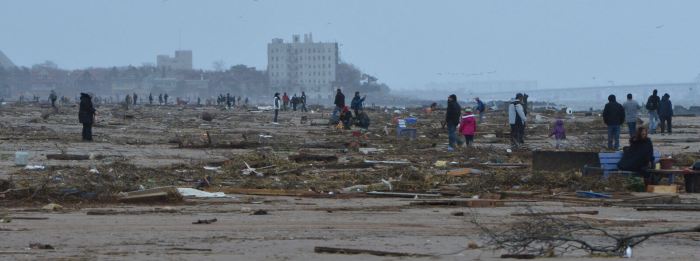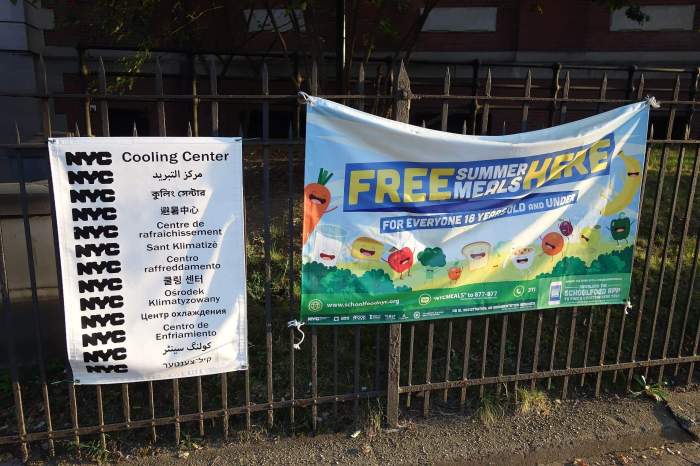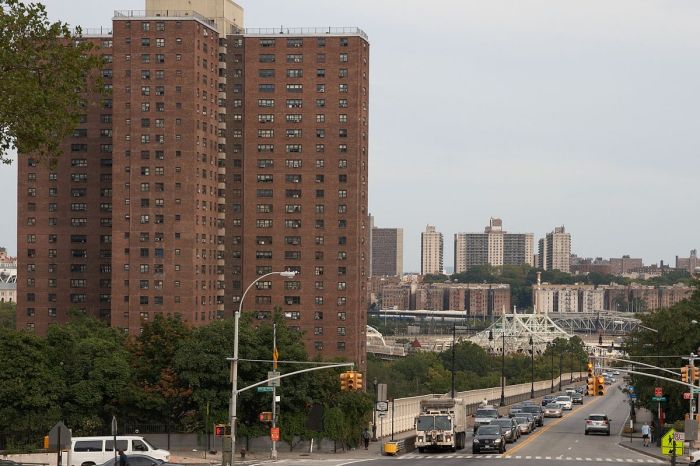A state of emergency has been declared in New York City as torrential rains flood streets and subway stations, and Brooklyn is getting some of the worst effects of the raging storm.
The downpour began on Thursday evening, and by Friday morning, as much of three inches of rain had already fallen in Kings County, with at least three to five additional inches expected by nightfall. Officials warned that flash flooding is possible in some areas as rain falls at rates of up to 2.5 inches per hour, and have advised New Yorkers to stay off the roads and seek higher ground if they live in basement apartments.
“Brooklyn is seeing some of the heaviest impacts of this rainstorm — all Brooklynites should be extremely careful right now,” Governor Kathy Hochul said on X, the platform formerly known as Twitter, on Friday morning.
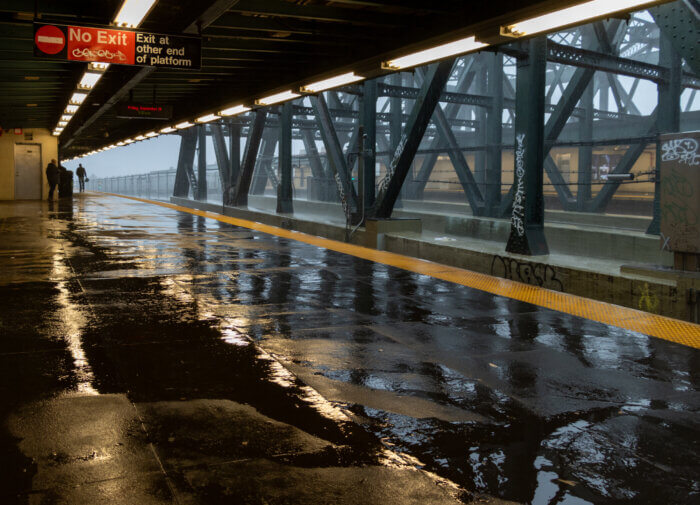
Flood maps showed up to 11 inches of flooding in some parts of Brooklyn on Friday morning, filling subway stations and major roadways with water.
The National Weather Service extended a Flash Flood Warning for Kings County through 2:30 p.m. on Friday, with a flood watch in effect for all of New York City through Saturday morning. The city’s Office of Emergency Management issued a travel advisory, urging New Yorkers to stay home if possible.
At a press conference on Friday, Mayor Eric Adams said he spent the morning in East New York, Flatbush Canarsie and Sheepshead Bay to get a firsthand look at the impact of the rainfall – after attending the funeral of a retired police officer in the region this morning.
“This is time for heightened alertness and extreme caution. If you are home, stay home. If you are at work or school, shelter in place for now,” Adams said, warning that up to eight inches of rain could fall before the day’s end.
“The bottom line is we’re here to help New Yorkers get through what is a life-threatening rainfall event,” Hochul said. “And I agree with you that people should be able to stay home if possible, but I know right now there’s a lot of anxious parents wondering if they’re going to be able to get their children home from schools…we want to make sure we get the subways, the trains, our communication system, our transportation system up working because there’s children who use the subways to get home from school.”
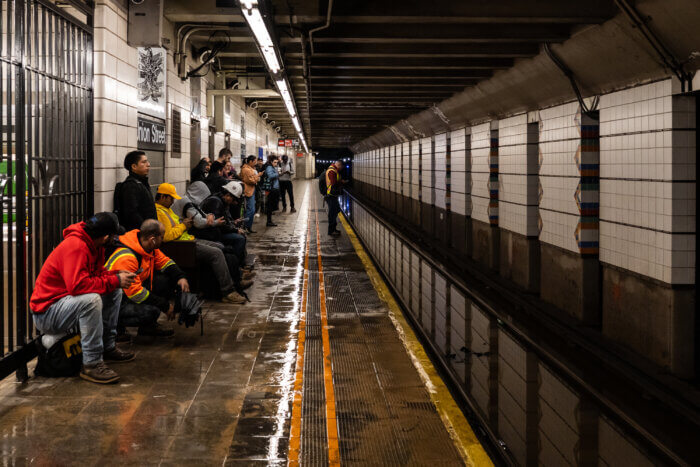
New York City Emergency Management Commissioner Zach Iscol said the city is taking the storm “extremely, extremely seriously,” and has been in communication with the National Weather Service since Wednesday. The city has teams that are specifically focused on highway flooding, basement flooding, and the impacts to the MTA, Iscol added.
“We’re continuously monitoring a number of high risk areas in order to deploy teams from different agencies to take immediate action as needed,” said Iscol.
Police temporarily closed parts of the Belt Parkway and Prospect Expressway to traffic due to heavy flooding, and videos posted to social media showed vehicles stuck in deep water on the Prospect Expressway near Caton Avenue and at the Park Circle entrance.
Park Circle, Brooklyn entrance to the Prospect Expressway is completely flooded. Traffic at a standstill. I walked to/from school through rushing waters and 2 ft+ pools of water. This is not normal #nyc pic.twitter.com/7zGoleKk3a
— Pizza Trike (@PizzaTrike) September 29, 2023
Subway service is suspended on the 1, 2, 4, 5, G, C, and D trains in Brooklyn, with partial suspensions on the F, A, and L lines, according to the MTA. Even on lines still running on Friday, trains are heavily delayed and service is suspended at a number of stations. The agency urged New Yorkers to stay home if they could and check the MTA’s website for service information before heading out. Bus service is also “heavily disrupted.”
The city is experiencing its wettest day since Hurricane Ida two years ago, Iscol said.
“Particularly in Brooklyn today and in parts of Queens we’ve seen significant flooding,” he said. “We expect another two to four inches of rain likely throughout this afternoon. If you live in these boroughs or in a basement, apartment or flood prone area, please make sure you have plans and are prepared to move to higher ground.”
FDNY Commissioner Kavanagh said there had been six basement apartment rescues as of midday Friday, and had received several calls from people trapped in cars and basement units. No fatalities have been reported.
New York City Department of Environmental Protection Commissioner Rohit T. Aggarwala said the Brooklyn Navy Yard received 2.58 inches of rain between 8 and 9 a.m. on Friday.
“I think many of you know, in the aftermath of Hurricane Ida, we were all educated about the fact that our sewer system was designed for 1.75 inches per hour and so it’s no a no surprise, unfortunately, as a result, that that part of Brooklyn and a couple of other particularly parts of Brooklyn have borne the brunt of this,” he said.
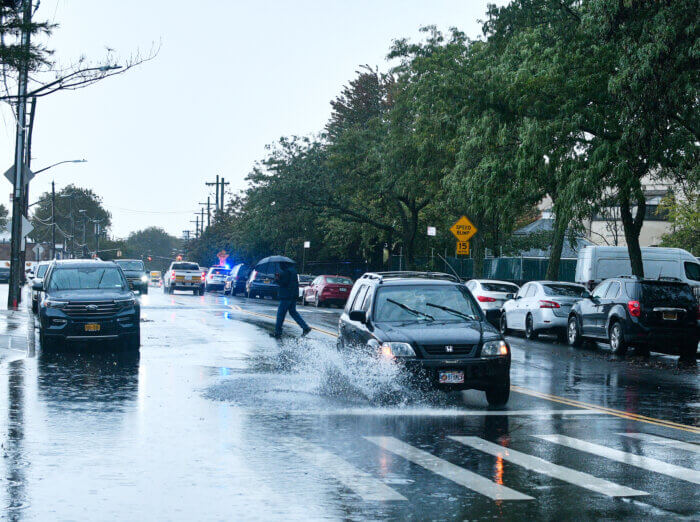
A “flood-net” system that will monitor flooding on New York City roads is under construction, Aggarwala said, and will be completed in two to three years.
“Overall, as we know, this changing weather pattern is the result of climate change,” he said. “And the sad reality is our climate is changing faster than our infrastructure can respond.”
New York City’s public schools are also dealing with flooding. Just an hour after the start of the school day, I.S. 228 in Gravesend asked parents to pick their children up “as soon as possible,” saying the school was flooding in several places and was not safe for students.
New York City Schools Chancellor David Banks said the principal at I.S. 228 was “premature in telling parents to come up to get their kid, which was precisely the wrong thing to do. The conditions are worse outside of the schools.”
In Bergen Beach, P.S. 312 was evacuated after water entered a boiler and caused it to smoke, Banks said. Students were shepherded three blocks away to I.S. 78, and Banks said the School Construction Authority is working to repair any damage.
“Every one of our schools have safety plans in place and are trained annually to prepare for days like today,” Department of Education spox Nathaniel Styer told Brooklyn Paper. “As trained — Building Response Teams have activated and protocol is to ‘shelter-in-place.’ A portion of our schools took in water, but nothing has impacted their ability to safely educate students. Our schools have safety plans in place and prepare for days like today.”
Flooding was particularly severe in parts of Gowanus around the toxic Gowanus Canal, where the city recently finished work on new high-level storm sewers meant to help alleviate combined sewer overflow.
Brad Vogel, member of the Gowanus Dredgers — an organization dedicated to raising awareness about waterfront stewardship and the sewer overflow that frequently impacts the Gowanus area — was in the midst of helping a neighbor clear out his flooded ground floor apartment on Friday afternoon.
“There was more water this morning than there was after Hurricane Ida,” Vogel said of a flooded intersection at 9th Street and 2nd Avenue. “My major concern is that literally tens of millions of dollars was spent upgrading the sewer infrastructure — specifically, we were told to address the recurring flooding that happens on 9th Street. And now we’re having even worse flooding than we did before those fixes, and that’s not necessarily because the infrastructure is causing it to be worse. It might just be intensifying climate changes.”
The concern for ineffective infrastructure wasn’t Vogel’s only grievance with how the city handles continual flooding in Gowanus.
“Something I think people really need to look into is can we actually just engineer our way out of the problem, or are we literally dealing with an issue of geography in Gowanus, because it is a former tidal marsh?” said Vogel. “When that interacts with climate change, you can’t just throw money and engineering at it to solve the problem.”
Live updates are available online via NotifyNYC, and New Yorkers can also sign up for live text and email alerts from NotifyNYC.
This is a breaking news story, and will be updated throughout the day. Check back for additional information. Last updated at 1:50 p.m.


